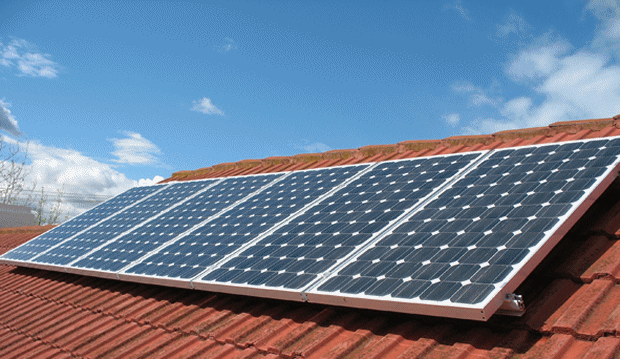Solar energy is an unending resource. Solar power can generate all or part of the energy people need. Solar panels can be used to generate power for the home and to sell to the grid. Solar power generation is also available in multiple forms.
Solar panels are similar to solar panels used in commercial buildings. Both panels work similarly. Solar panels are divided into two categories, regardless of size: monocrystalline or polycrystalline.
Monocrystalline is older than the other two types. These panels still produce the most power. The conversion rate of these panels is 18 to 25 percent. The most expensive solar panels are also the most powerful.
Monocrystalline solar panels have many advantages.
They are also the longest-lasting solar panels. Most monocrystalline solar cells on the market are expected to last 25 years. They last much longer in most cases. The performance of these ceramics is less variable in temperature ranges compared to their polycrystalline counterparts.
Monocrystalline solar panels: Disadvantages
These monocrystalline solar panels are expensive. There is no other reason to use them instead of different types.
Benefits of Polycrystalline solar panels
They are cheaper. Thanks to the latest advances in monocrystalline panel construction, polycrystalline panels produce only half the power of monocrystalline panels.
Polycrystalline solar panels: Disadvantages
They are twice as large but produce only half the power. Their inefficiency is compounded by the fact that they are twice as big and pay only half the power. The panels have a speckled appearance instead of a uniform one. This might appeal to only some homeowners.
Calculate how many of each model you would need.
The “customer” for this example lives in Brisbane. This example is for the summer when Brisbane enjoys 21 sunny days per month. The average number of hours of sunlight is eight during those days. Brisbane receives, on average, 168 hours of daylight in a month. Let’s round up 168 hours to 175 to make it easier to understand. The average electricity bill in Brisbane is $1,600 per year, or $133 a month. The cost per kilowatt hour is approximately $0.25.
A household of four will use 15,000 kWh per year, which is 41 kWh daily. It’s 40. In winter, the sun is out for eight hours per day. A 300-watt monocrystalline panel that operates eight hours daily produces 2.4 kWh. To cover daily energy consumption, one would need 16,7 solar panels. Due to the fluctuating sunshine, you should have 18 meetings.
In Australia, the average cost of a monocrystalline panel is $0.75/watt. This comes to $225 for each solar panel. This means that 18 of these solar panels will cost $4,050. Solar panels will pay for themselves at that rate in just over two years. A homeowner will then have no electricity costs per month.
A 300-watt polycrystalline panel costs $120. For a typical family of four to get 40 kWh, you would need twice as many monocrystalline panels as polycrystalline panels.
Thin Film Panels
Thin film solar panels are only suitable for commercial buildings. Thin film solar panels are only half as efficient as polycrystalline panels. They are impractical for home use because they require so much space—the best-looking solar panels. Businesses need the extra space on the roof. The cost is similar to the polycrystalline solar panels.
The panels are thinner and more efficient than crystalline solar panels. Also, they are easier to manufacture in large numbers than crystalline panels. They still need to be made available in Australia for the home market.
If one produces more power than the other, you have two options.
Installing a household cap is the first solution. Most of these items have a warranty for a specific number of kilowatt-hours. Some things will stop working after 18-kilowatt hours, while others will last for 30,000 or longer. These are meant to be used on overcast or rainy days. This could also include snowy weather, depending on where you live. These capacitors cost between $8,000 to $12,000. Monocrystalline solar panels are more efficient and can be paid for in four years.








